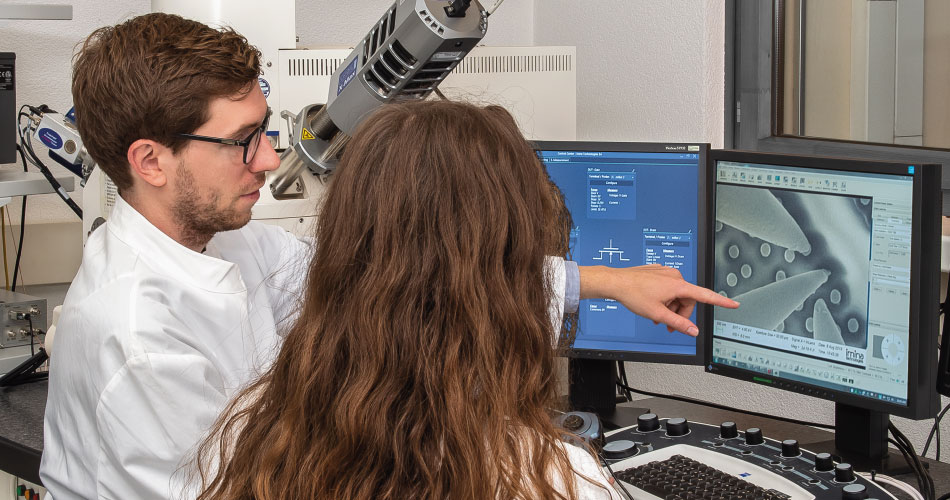The Electron Beam Induced Resistance Change (EBIRCh) is an increasingly popular Electrical Failure Analysis (EFA) technique for defect localization in dielectrics. It highlights the precise location of leakage on defective gates. The spatial resolution of EBIRCh is sufficient for a TEM lamella to be prepared for further physical failure analysis. EBIRCh is very straightforward to implement, however, we do not completely understand the fundamental origin of its signal.
In this application note based on our recent paper [1], we discuss the contrast generated by EBIRCh and how to separate it from other phenomena and gain a better understanding of this technique.
Based on how EBIRCh signal is influenced by different experimental conditions, EBIRCh data interpretation must be based on a range of bias voltages to avoid the risk of analyzing the features that originate from other sources, such as induced currents at junction sites. Localization images acquired at zero bias help to distinguish resistance-related currents from induced and absorbed currents. Heating provides additional insights into the physical origin of contrast.
[1] Grigore Moldovan, William Courbat, Strategies to Identify Physical Origin of Contrast in EBIRCH, Conference Proceedings from the 48th International Symposium for Testing and Failure Analysis, 2022, pp. 277-283
EBIC measurement of the minority carriers’ diffusion length in a GaAs solar cell p-n junction
Electrical failure analysis of high electron mobility transistors
Cross-section EBIC of a transistor array using a Large Sample Adapter
We have fully equipped demo lab for semiconductor electrical failure analysis. Our applications team is eager to perform live demonstrations and feasibility studies for you, onsite or online.
In the meantime, do not miss the opportunity to learn more about our products and applications with one of our webinars!
